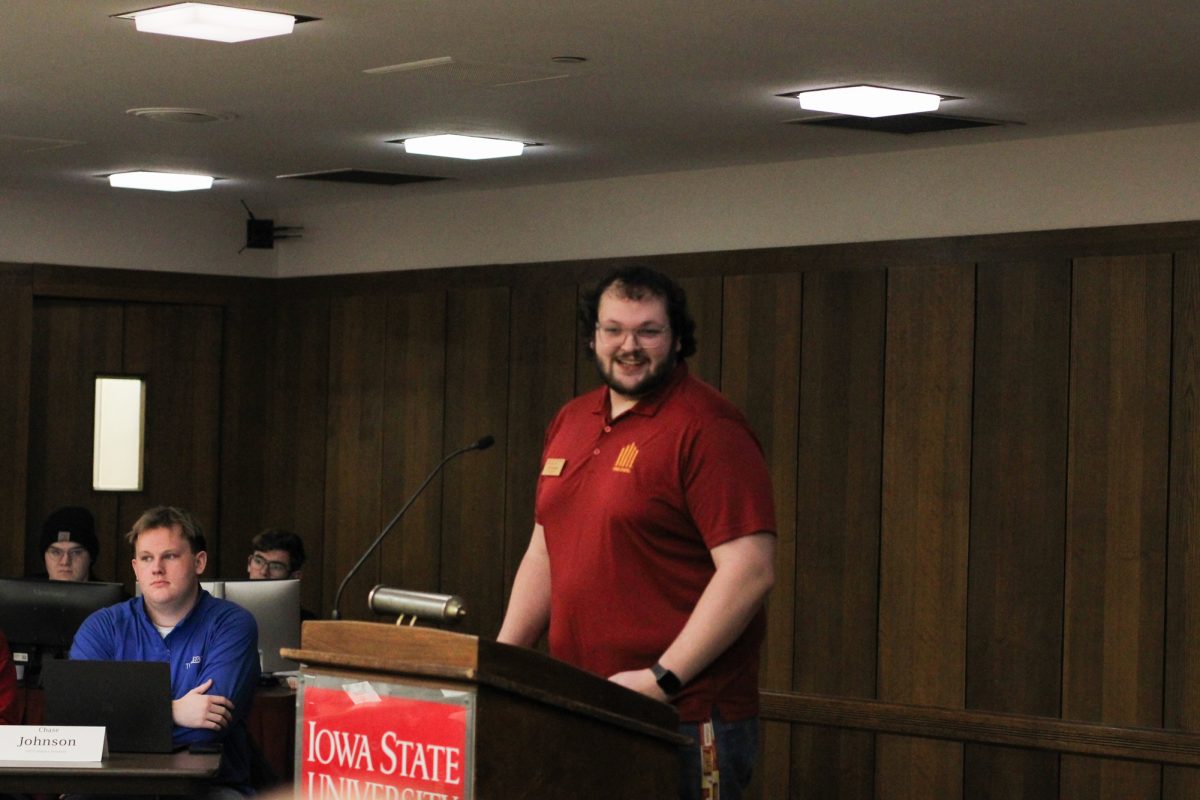Megaplanet to be unveiled Saturday
January 26, 2001
Here’s a sculpture that might catch people’s attention.University Museums will unveil a 75-ton glowing glass planet sculpture that rests on a base of gradually changing colored optic lights. It will be exposed to the public Sunday in a free program at Brunnier Art Museum.The sculpture, titled Megaplanet, was created by Massachusetts sculptor Josh Simpson. Simpson, Gov. Tom Vilsack, Interim President Richard Seagrave and University Museums director Lynette Pohlman will be speaking.”This is another tooth in Iowa State’s smile,” Seagrave said. “I actually have a piece of [Simpson’s] myself. I’m a big fan.” Brunnier’s Megaplanet is the largest that Simpson has created to date. The large globe will sit atop a base of optic lights that will slowly change color to constantly transform the planet’s image. The base was designed by Tom Stancliffe, professor at the University of Northern Iowa.Museum staff first became aware of Simpson’s work in 1986 and in 1988 when Brunnier hosted a solo exhibition of Simpson’s work. Continuing the celebration of 25 years on the ISU campus, Matthew DeLay, curator of education, said that Simpson’s Megaplanet was one of several works of art commissioned for the anniversary celebration. According to DeLay, University Museums has a historic glass arts collection with pieces from ancient through modern times. Simpson’s glass planet expresses the University Museums’ mission to focus on the creative interactions in the arts, sciences and technology.”There is so much depth and detail, you could spend hours looking at it,” said Dana Michels, curator at University Museums.Simpson attended Hamilton College in Clinton, N.Y., where he graduated in 1972 with Gov. Vilsack. There he became inspired to create glass planets after finding marbles in his garden that were 60 or 70 years old and were still perfect in color and form. Since then, Simpson has left his planets all over the world, in places as diverse as Hawaiian volcanoes, the rainforests of Bali, the Arizona desert, a glacier field in Antarctica, the highest turret of the Chambord Castle in the Loire Valley of France and in the streets of London, New York and Tokyo, among other locations. Simpson’s planets are on all seven continents and in three of the world’s seven seas. One of his planets has even traveled to space with his wife, astronaut Catherine Coleman.His work has been featured in the Smithsonian, the White House, the Metropolitan Museum of Art, the National Air and Space Museum, the Corning Museum of Glass and now Brunnier. Megaplanet will become part of the museum’s permanent collection and will be on display through April 11.






